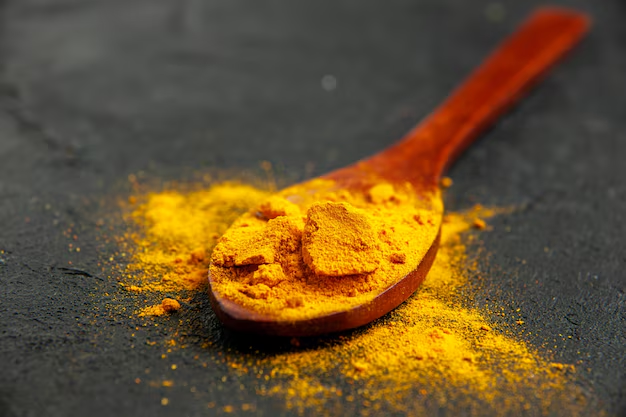Harnessing Turmeric for Blood Sugar Control: An Ayurvedic Approach
Harnessing Turmeric for Blood Sugar Control: An Ayurvedic Approach, a vibrant yellow spice commonly used in Indian cuisine, is not only known for its culinary uses but also for its numerous health benefits. In Ayurveda, turmeric is revered for its medicinal properties, particularly in managing blood sugar levels. This blog explores how turmeric can support blood sugar control, its mechanisms of action, ways to incorporate it into your diet, and important considerations for those interested in this natural remedy.
Understanding Blood Sugar and Its Implications
Blood sugar, or glucose, is a critical source of energy for our bodies. However, when blood sugar levels are consistently high, it can lead to serious health issues, including diabetes, heart disease, and obesity. In Ayurveda, managing blood sugar is not just about diet; it’s about balancing the body’s energies (doshas), optimizing digestion, and promoting overall well-being.
The Role of Turmeric in Blood Sugar Management

Turmeric (Curcuma longa) contains an active compound called curcumin, which is responsible for its golden hue and numerous health benefits. Research has shown that curcumin has anti-inflammatory, antioxidant, and insulin-sensitizing properties, making it a valuable ally in blood sugar control.
1. Anti-Inflammatory Properties
Chronic inflammation is often linked to insulin resistance, a key factor in type 2 diabetes. Curcumin helps to reduce inflammation in the body, which can enhance insulin sensitivity and improve blood sugar control.
2. Antioxidant Effects
Oxidative stress, caused by an imbalance between free radicals and antioxidants, can damage cells and lead to insulin resistance. Turmeric’s antioxidant properties can help combat oxidative stress, thereby supporting healthy blood sugar levels.
3. Insulin Sensitivity
Studies suggest that curcumin may improve insulin sensitivity. By enhancing the body’s response to insulin, turmeric can help regulate blood sugar levels and reduce the risk of developing diabetes.
4. Digestive Health
In Ayurveda, proper digestion (Agni) is crucial for maintaining health. Turmeric aids in digestion, which can prevent blood sugar spikes by promoting stable energy levels.
Incorporating Turmeric into Your Diet
Integrating turmeric into your daily routine can be simple and enjoyable. Here are several ways to incorporate this powerful spice into your diet:
1. Turmeric Milk (Golden Milk)
One of the most popular ways to consume turmeric is in the form of turmeric milk, or “golden milk.” This soothing drink combines turmeric with warm milk (dairy or plant-based), a sweetener, and spices like black pepper and cinnamon.
Recipe:
- 1 cup of milk (cow’s, almond, or coconut)
- 1 teaspoon turmeric powder
- 1/4 teaspoon black pepper (enhances curcumin absorption)
- 1/2 teaspoon cinnamon
- Sweetener of choice (honey, maple syrup, etc.)
Instructions:
- In a small saucepan, heat the milk.
- Add turmeric, black pepper, and cinnamon.
- Whisk until well combined and heated through.
- Sweeten to taste and enjoy warm.
2. Turmeric Smoothies
Add a teaspoon of turmeric powder to your morning smoothie. Pair it with ingredients like spinach, banana, and ginger for a nutrient-dense breakfast that supports blood sugar control.
Recipe:
- 1 banana
- 1 cup spinach
- 1/2 cup almond milk
- 1 teaspoon turmeric powder
- 1 teaspoon ginger (fresh or powdered)
- Ice (optional)
Instructions:
- Combine all ingredients in a blender.
- Blend until smooth and creamy.
3. Turmeric Tea
Turmeric tea is a refreshing way to enjoy the benefits of turmeric. You can make it with fresh ginger and lemon for added flavor and health benefits.
Recipe:
- 1 teaspoon turmeric powder
- 1 teaspoon grated ginger
- Juice of 1/2 lemon
- 2 cups water
- Honey (optional)
Instructions:
- Boil water and add turmeric and ginger.
- Simmer for 10 minutes.
- Strain into a cup and add lemon juice and honey if desired.
4. Cooking with Turmeric
Incorporate turmeric into your meals by adding it to soups, stews, curries, and roasted vegetables. It pairs well with a variety of spices, making it a versatile addition to many dishes.
Example Recipe: Turmeric Vegetable Stir-Fry
- 2 cups mixed vegetables (broccoli, bell peppers, carrots)
- 1 tablespoon oil (coconut or olive)
- 1 teaspoon turmeric powder
- Salt and pepper to taste
Instructions:
- Heat oil in a pan.
- Add vegetables and sauté until tender.
- Stir in turmeric, salt, and pepper, and cook for an additional minute.
5. Turmeric Supplements
For those who find it challenging to incorporate turmeric into their diet, turmeric supplements are available. However, it’s essential to choose high-quality supplements and consult a healthcare provider before starting any new supplement regimen.
Precautions and Considerations
While turmeric is generally safe for most people, there are a few precautions to keep in mind:
- Dosage: While culinary amounts are safe, higher doses (such as those found in supplements) may cause gastrointestinal issues in some individuals.
- Blood Thinning: Turmeric can act as a blood thinner. If you are on anticoagulant medication, consult your doctor before using turmeric supplements.
- Gallbladder Issues: Those with gallbladder problems should avoid high doses of turmeric, as it may stimulate bile production.
- Pregnancy and Breastfeeding: While turmeric in food is generally safe, pregnant and breastfeeding women should consult a healthcare provider before taking turmeric supplements.
- Interactions with Medications: Turmeric may interact with certain medications, including diabetes medications. Always discuss with a healthcare provider if you are on medication.
Conclusion
Harnessing Turmeric for Blood Sugar Control: An Ayurvedic Approach into your diet can be a flavorful and healthful way to support blood sugar control, especially within the framework of Ayurveda. By harnessing the power of this golden spice, you can promote overall well-being and balance in your body.
As with any natural remedy, it’s essential to approach turmeric with an understanding of its potential benefits and limitations. Always consult with healthcare professionals, especially if you have pre-existing conditions or are on medication.
By making mindful dietary choices and integrating turmeric into your lifestyle, you can take proactive steps toward managing your blood sugar and enhancing your overall health. Whether in a warming cup of golden milk or a vibrant vegetable dish, turmeric offers a simple yet powerful tool in the quest for better health.








Leave a reply